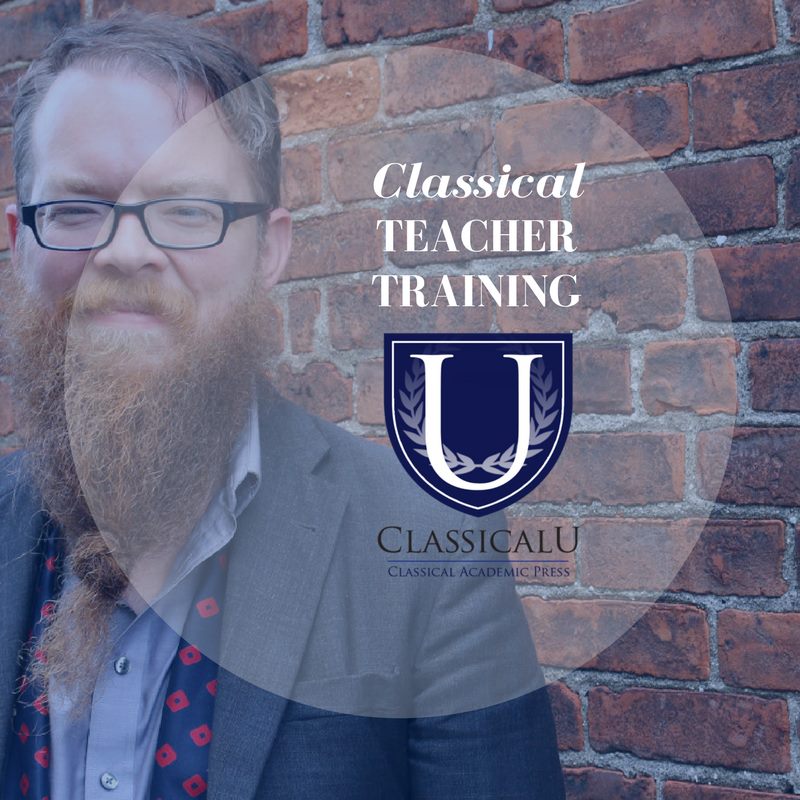A review of Desiring the Kingdom: Worship, Worldview, and Cultural Formation, by James K. A. Smith.
By Christopher A. Perrin, PhD
We all have ideals—ideals for a wonderful marriage, the best job, a superb vacation. Our ideals, however, are often fuzzy. What does the ideal church really look like? An ideal government? What about an ideal school?
Well to outline an ideal marriage involving the intersection of two inscrutable human beings is a difficult challenge, to actually live out an ideal marriage is beyond difficult. What might an ideal school look like—with the intersection of two to three hundred human beings—parents, teachers, administrators, board members and….students? And that would be a small school.
If James K. A. Smith is right, we simply cannot help imagining an ideal future, an ideal of human flourishing. According to Smith in his book Desiring the Kingdom: Worship, Worldview and Cultural Formation, imagining ideals is a large part of what it means to be human. We all are seeking some version of the good life, we all desire a kingdom. What is more, we are all being shaped and formed in various ways to love and desire one sort of kingdom or another.
Smith contends that before we humans are cognitive, rational beings we are creatures of desires, passions and loves. He further contends that the way we change is not primarily a matter of the mind, but primarily the result of the heart-shaping forces of the “cultural liturgies” we encounter in the world. He writes, “Because our hearts are oriented primarily by desire, by what we love, and because those desires are shaped and molded by the habit-forming practices in which we participate, it is the rituals and practices of the mall—the liturgies of the mall and market—that shape our imaginations and how we orient ourselves to the world. Embedded in them is a common set of assumptions about the shape of human flourishing, which becomes an implicit telos or goal of our own desires and actions. That is, the visions of the good life embedded in these practices become surreptitiously embedded in us through our participation in the rituals and rhythms of these institutions. “
Smith takes time to examine the ways that various institutions do in fact act as cultural liturgies. He begins with the mall, imagining what it might be like for a Martian anthropologist to study its culture. Smith is convinced that such an anthropologist would see the mall as a thoroughly religious institution. The mall has a daily visitation of pilgrims who enter a large and dazzling cathedral of glass, concrete, light and ornamentation. There are banners and flags in displayed in a large atrium; there are familiar texts and symbols placed on walls to help us easily identify what is inside the various chapels that are contained in this labyrinthine cathedral. Rich iconography lines the wall of each chapel, and there are many three-dimensional statues adorned with the garb that we too can acquire in imitation of these ideals. These same icons, statues and exemplars can be found in similar temples across the country and around the world. In fact the wide distribution of these colors and icons are found in many places in the outside world and have drawn us as pilgrims in the first place. The power of the gospel message of these temple is the power of beauty, “which speaks to our deepest desires and compels us to come not with dire moralisms but rather with a winsome invitation to share in the envisioned good life.”
At this point, Smith is just getting started with his analysis of the “religion of the mall.” He goes on to describe the purchasing experience as a kind of secular Eucharist. Understandably, he does not like or praise the religion of the mall. He does acknowledge, however, that the mall understands something profound about human beings. It embodies its view of its kingdom, rather than merely talking about it. He writes, “Indeed, the genius of mall religion is that actually it operates with a more holistic, affective, embodied anthropology (or theory of the human person) than the Christian church tends to assume. Because worldview-thinking still tends to focus on ideas and beliefs, the formative cultural impact of sites like the mall tends to not show up on our radar.”
As you might guess, the point of Smith’s book is to help us turn on our radar to the formative impact that various cultural liturgies have on us all. Of interest to classical educators will be his liturgical analysis of university education and of Christian college education. Using Tom Wolfe’s book I am Charlotte Simmons, Smith points out that the college experience is far more than the 15 hours a week a student spends in a classroom. Secular university experience exerts a dynamic and intentional shaping influence on college students in dozens of ways. Dorm life, frat house life, football games, drinking, bar and club escapades, hooking up and an exhausting, frenetic rhythm of classes, study, exams shape and form students for the “real world” of “corporate ladder climbing and white-collar overtime needed in order to secure the cottage, the boat, and the private education for the kids.” Smith concludes that while the classroom, laboratory, lecture hall and library have performed some role in shaping a student, it does not compare to these other ways students are shaped. The information provided in the academic areas is “not nearly as potent as the formation we’ve received in the dorm and frat house, or the stadium and dance club.”
His look at Christian colleges is not much more encouraging. Too many Christian colleges in his opinion simply take the basic secular approach to education and add the integration of a Christian worldview or Christian perspective. Smith suggests that the dominant paradigm of Christian education asserts that “goal of a Christian education is to produce professionals who do pretty much the same sorts of things that graduates of Ivy League and state universities do, but who do them ‘from a Christian perspective,’ and perhaps with the goal of transforming and redeeming society.” For Smith this is a regrettable reduction as it “unhooks Christianity from the practices that constitute Christian discipleship.” For Smith, the worship practices of the church must be vitally bound up with the rhythms and practices of a Christian college (and school). When the Christian college is unhooked from the liturgies of the church we end up with an intellectualization of Christianity, leading students to think that “being a Christian doesn’t radically reconfigure our desires and wants, our practices and habits.” This happens because for far too long Christian education has “been concerned with information rather than formation; thus Christian colleges have thought it sufficient to provide a Christian perspective, an intellectual framework, because they see themselves as fostering individual ‘minds in the making.’ Hand in hand with that, such an approach reduces Christianity to a denuded intellectual framework that has diminished bite because such an intellectualized rendition of the faith doesn’t touch our core passions.”
I think by now you sense Smith’s thesis beginning to sink in. Christian worldview instruction is not enough. Appealing to the mind and intellect is not enough. Not that instruction in Christian worldview and ideas should not be done—such instruction is vital. But it is not sufficient, not enough. We must address the core passions of our students, and we do this by means of creating community, atmosphere, rhythms, practices, traditions that shape the hearts of students by engaging them as affective, passionate lovers, not mere minds. The church, rightly worshiping, seeks to do this. Welcoming, greeting, singing, hearing, tasting, standing, kneeling, we worship with all of our person—mind and body. Embodied worship is formative and shapes our love for the kingdom of God and acts a powerful counter-formation over against the formative influence of a dozen secular liturgies we witness and experience. In fact the liturgy of worship helps subvert the power of these secular liturgies, wising us up to their power and methods.
This is where things get interesting. Could it be that our children are being shaped to love a version of the good life that is primarily determined by the “liturgies” of the mall, football stadium, TV sitcoms and the iPod? Could it be that our schools privilege direct engagement with the mind, and the presentation of ideas and a Christian worldview but are nonetheless failing to thwart the power of these other shaping influences? Any teacher with experience can tell you about scores of students whose minds and hearts are seldom truly present in the classroom. They are instead occupied with the shopping for the next fashionable item, the next soccer game, the latest movie, Monday Night Football, the coming rock concert. These things shape them and engage them as lovers, and the teacher often feel powerless standing before her whiteboard with a black marker in her hand. She wonders if would not be better to show then an educational movie—something they can relate to.
Consider the atmosphere and community of your school. What is its liturgy? That is, what are its rhythms, rituals, practices and traditions? We carefully plan our curriculum and lessons. Do we carefully plan and create rhythms, rituals, practices and traditions? Do our teachers carefully plan rhythms, rituals, practices and traditions for each class of students? If Smith is right, then it is these things that will most profoundly shape what our students will love. Every teacher knows that students will forget 75% of the content you “teach” them in a classroom. Might it be wise then to pay attention to more than just content think about form with the same rigor? How can we shape, form and engage hearts, minds and yes, even bodies? Is there vibrant worship in you school? Does music echo through the halls and the great art adorn the walls? Are their dinner parties and great conversation with students and adults alike? Is your facility attractive and conducive to worship and learning? Are poems read and recited, stories written and told? Is Scripture read at lunch for a time? Are there traditions of hospitality when existing students welcome new students into the school, when upper school students warmly welcome new 7th graders or 9th graders? Do teachers and parents gather socially to read books, cook, dine and pray? Do high school students babysit for the young children of teachers (maybe at no charge?). Do you older students help teach the younger students and join them for games on the playground from time to time? Do teachers and students go hiking together or bike-riding or running? Are pastors visiting your school counseling students and speaking in your classrooms or chapel services, or teaching a Bible class? Do you pray for the churches represented by your school and for each pastor by name? Does your school fast occasionally and give money or food to the needy?
These and dozens of other questions might enable us to think more deeply about embodying classical Christian education, such that students absorb it with all five senses and with their hearts as well as their minds. By considering such questions (and generating more) we might clarify our vision of an ideal classical school, and remove much of the fuzziness and confusion that impedes enthusiasm and momentum. Classical education has historically been communal and ecclesial and Smith poignantly reminds us of this. He also helps us to see more clearly that a classical Christian education involves the collaboration of family, church and school as we seek nothing less than the kingdom of God. Classical educators and leaders would do well to learn from the insights of this valuable and timely book.








